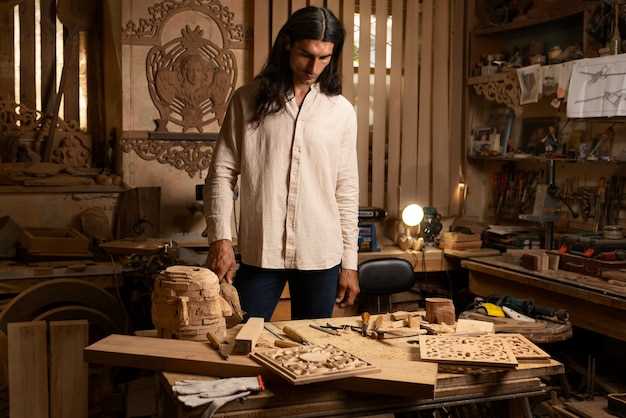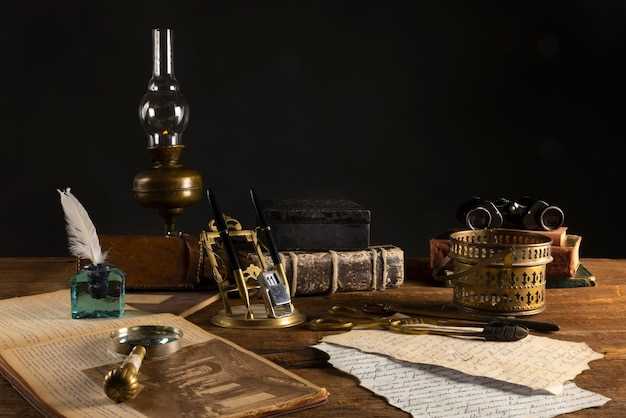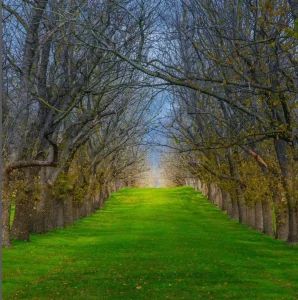
Within the realm of our ancestral heritage lies a treasure trove of stories waiting to be discovered. These narratives, woven into the fabric of our family’s past, are often preserved through the tangible remnants of history – heirloom antiques. These cherished artifacts serve as tangible links to our ancestors, offering glimpses into their lives, their passions, and their legacies.
By documenting and caring for these heirloom antiques, we embark on a journey to safeguard our family’s heritage for future generations. Through the meticulous preservation of these objects, we not only honor the craftsmanship and artistry of the past but also ensure that the stories they hold continue to resonate with our descendants.
Each heirloom antique possesses a unique tale, a narrative that unfolds through the passage of time. From delicate porcelain figurines to weathered wooden furniture, these artifacts bear witness to the lives lived and the memories created. By capturing the essence of these objects through careful documentation, we create a bridge between the past and the present, allowing our family’s history to transcend generations.
As we embark on this journey of preservation, it is essential to approach the task with reverence and respect. The delicate nature of these heirloom antiques demands our utmost care and attention. Through the use of proper storage techniques, regular maintenance, and gentle handling, we can ensure that these treasures withstand the test of time, preserving not only their physical beauty but also the stories they hold within.
The Importance of Preserving Family History
Understanding and safeguarding our ancestral heritage is of utmost significance in maintaining a connection to our past and ensuring its longevity for future generations. The preservation of our family’s legacy goes beyond mere documentation; it encompasses the essence of who we are and where we come from.
By cherishing and safeguarding the stories, artifacts, and traditions passed down through generations, we can gain a deeper understanding of our roots and the experiences that have shaped our family’s identity. These invaluable treasures provide a tangible link to our ancestors, allowing us to appreciate their struggles, triumphs, and contributions to our collective history.
Preserving family history not only fosters a sense of belonging and identity but also serves as a source of inspiration and guidance for future generations. It offers a window into the past, enabling us to learn from our ancestors’ experiences, values, and wisdom. By understanding the challenges they faced and the resilience they demonstrated, we can draw strength and resilience in our own lives.
Moreover, the preservation of family history allows us to pass down cherished heirlooms and artifacts that hold sentimental value. These objects, whether it be a handwritten letter, a piece of jewelry, or a piece of furniture, carry the stories and memories of those who came before us. They serve as tangible reminders of our family’s journey and can evoke a deep emotional connection to our heritage.
As time passes, memories fade, and stories become fragmented. By actively documenting and caring for our family history, we ensure that these precious narratives are not lost to time. Through the use of modern technology and archival practices, we can safeguard photographs, documents, and other artifacts, preserving them for future generations to explore and cherish.
In conclusion, the preservation of family history is a vital endeavor that allows us to honor our ancestors, understand our roots, and pass down a rich legacy to future generations. By valuing and safeguarding our family’s heritage, we can ensure that their stories and contributions continue to inspire and shape our lives for years to come.
Documenting Heirloom Antiques: Capturing the Stories Behind the Objects
Unveiling the rich narratives concealed within cherished heirloom antiques is an invaluable endeavor. By delving into the captivating tales that lie behind these objects, we can gain a deeper understanding of our family’s heritage and the significance of these artifacts. Documenting heirloom antiques allows us to preserve and pass down these stories to future generations, ensuring that the memories and legacies associated with these treasured possessions endure.
Tips for Properly Storing and Displaying Heirloom Antiques
When it comes to preserving and showcasing your cherished family heirloom antiques, it is essential to follow proper storage and display techniques. By implementing these tips, you can ensure the longevity and beauty of these valuable pieces for generations to come.
1. Climate Control
One of the most critical factors in preserving heirloom antiques is maintaining a stable climate. Fluctuations in temperature and humidity can cause irreversible damage to delicate materials such as wood, fabric, and metal. To prevent this, store your antiques in a room with controlled temperature and humidity levels. Avoid placing them near windows or vents that can expose them to direct sunlight or drafts.
2. Proper Cleaning
Regular cleaning is essential to prevent dirt, dust, and grime from accumulating on your heirloom antiques. However, it is crucial to use gentle cleaning methods and avoid harsh chemicals that can damage the surface or finish. Consult with a professional conservator or research appropriate cleaning techniques for each specific type of antique to ensure you are using the correct methods.
3. Protective Packaging
When storing heirloom antiques, it is essential to provide them with proper protection. Use acid-free tissue paper or archival-quality materials to wrap delicate items to prevent scratches and damage. For larger pieces, consider using custom-made crates or padded covers to safeguard them during transportation or long-term storage.
4. Display Considerations
When displaying heirloom antiques, it is crucial to consider their surroundings. Avoid placing them in direct sunlight or near heat sources, as this can cause fading, warping, or other forms of damage. Additionally, be mindful of the weight and stability of the display furniture to prevent accidents or damage to the antiques.
5. Rotation and Maintenance

To prevent excessive wear and tear on your heirloom antiques, consider rotating them periodically. This allows for even exposure to light and prevents one side from fading or deteriorating faster than the other. Regularly inspect and maintain your antiques, checking for any signs of damage or deterioration. Promptly address any issues to prevent further harm.
By following these tips for properly storing and displaying your heirloom antiques, you can ensure their preservation and enjoyment for years to come. Remember, each antique is unique, so it is essential to research and consult with professionals when in doubt about the best practices for specific items.
Cleaning and Maintaining Heirloom Antiques: Dos and Don’ts
Properly caring for and preserving cherished family heirlooms is essential to ensure their longevity and continued beauty. In this section, we will explore the dos and don’ts of cleaning and maintaining heirloom antiques, providing valuable tips and guidelines to help you preserve these precious pieces for future generations.
When it comes to cleaning heirloom antiques, it is crucial to approach the task with caution and care. While regular cleaning is necessary to remove dust and dirt, using the wrong cleaning methods or products can cause irreversible damage. It is important to avoid harsh chemicals, abrasive materials, and excessive moisture, as these can lead to discoloration, scratches, or even structural deterioration.
Instead, opt for gentle cleaning techniques and non-abrasive materials. Dusting with a soft, lint-free cloth or a natural bristle brush is a safe way to remove surface dirt without causing harm. For more stubborn stains or grime, consider using a mild soap specifically formulated for delicate surfaces, diluted in lukewarm water. Remember to always test any cleaning solution on a small, inconspicuous area before applying it to the entire piece.
When it comes to maintaining heirloom antiques, prevention is key. Avoid exposing these precious items to direct sunlight, extreme temperatures, or high humidity, as these environmental factors can accelerate deterioration. Additionally, it is advisable to handle heirloom antiques with clean hands and to use protective padding or gloves when necessary to prevent oils, acids, or scratches from transferring onto the surfaces.
Regular inspections are also essential to catch any signs of damage or deterioration early on. Look for loose joints, cracks, or any other structural issues that may require professional attention. If you notice any problems, it is best to consult a qualified conservator or restoration specialist who can provide expert advice and assistance.
| Do | Don’t |
|---|---|
| Use gentle cleaning techniques | Use harsh chemicals or abrasive materials |
| Handle with clean hands | Touch with dirty or oily hands |
| Inspect regularly for damage | Ignore signs of deterioration |
| Consult a professional for restoration | Attempt repairs without proper knowledge |
By following these dos and don’ts, you can ensure that your heirloom antiques remain in excellent condition and continue to be cherished for generations to come.
Seeking Professional Help: When to Consult an Expert for Restoration
Knowing when to seek professional help for the restoration of your cherished heirloom antiques can be crucial in preserving their historical significance and maintaining their value. While it is important to document and care for these precious items, there are instances where the expertise of restoration professionals becomes necessary.
Identifying the right time to consult an expert can be challenging, especially when faced with the desire to handle the restoration process independently. However, certain factors should prompt you to consider seeking professional help. These factors include the complexity of the restoration required, the fragility of the antique, and the potential risk of causing irreversible damage.
- Complex Restoration: If your heirloom antique requires intricate repairs or extensive restoration work, it is advisable to consult a professional. These experts possess the knowledge and skills to handle complex restoration processes, ensuring that the item is restored to its original condition without compromising its authenticity.
- Fragility: Fragile antiques, such as delicate porcelain or aged textiles, demand extra care during restoration. Professionals have the necessary tools and techniques to handle these fragile materials without causing further damage. Their expertise in handling delicate items can help preserve the integrity of the antique while restoring its beauty.
- Risk of Irreversible Damage: Some restoration processes involve the use of chemicals or specialized equipment that can pose a risk to both the antique and the restorer. If you are unsure about the appropriate methods or lack the necessary equipment, consulting an expert can prevent irreversible damage and ensure the longevity of your heirloom.
Remember, seeking professional help for restoration does not diminish your role in preserving your family’s history. Instead, it demonstrates your commitment to safeguarding these valuable heirlooms for future generations. By consulting an expert when necessary, you can ensure that your antiques receive the care and attention they deserve, allowing their stories to continue to be passed down through the generations.
Passing Down the Legacy: Ensuring the Future Preservation of Family History
In the realm of heritage and tradition, it is essential to safeguard the rich tapestry of our ancestral past for future generations. By securing the longevity of our family’s narrative, we can ensure that the stories, values, and experiences that have shaped us will continue to resonate with those who come after us. This section explores the strategies and techniques that can be employed to guarantee the preservation and transmission of our family’s legacy.
1. Curating a Comprehensive Family Archive
One of the fundamental steps in securing the future preservation of family history is the creation of a comprehensive family archive. This archive serves as a repository for all the significant documents, photographs, letters, and other artifacts that encapsulate the essence of our family’s journey through time. By organizing and cataloging these items, we can ensure their accessibility and protection for future generations.
2. Implementing Digital Preservation Techniques

In the digital age, it is crucial to adapt our preservation methods to the changing technological landscape. Implementing digital preservation techniques allows us to safeguard our family history in a format that is easily accessible and less susceptible to physical deterioration. By digitizing photographs, documents, and other heirlooms, we can ensure their longevity and enable future generations to explore and connect with their heritage.
| Benefits of Digital Preservation | Challenges and Solutions |
|---|---|
| 1. Easy accessibility for multiple family members | 1. Ensuring proper backup and storage of digital files |
| 2. Preservation of fragile and deteriorating physical items | 2. Regularly updating file formats to prevent obsolescence |
| 3. Ability to share and collaborate with distant relatives | 3. Implementing metadata and tagging systems for efficient organization |
By embracing digital preservation techniques, we can bridge the gap between the past and the future, ensuring that our family’s legacy remains intact and accessible for generations to come.


